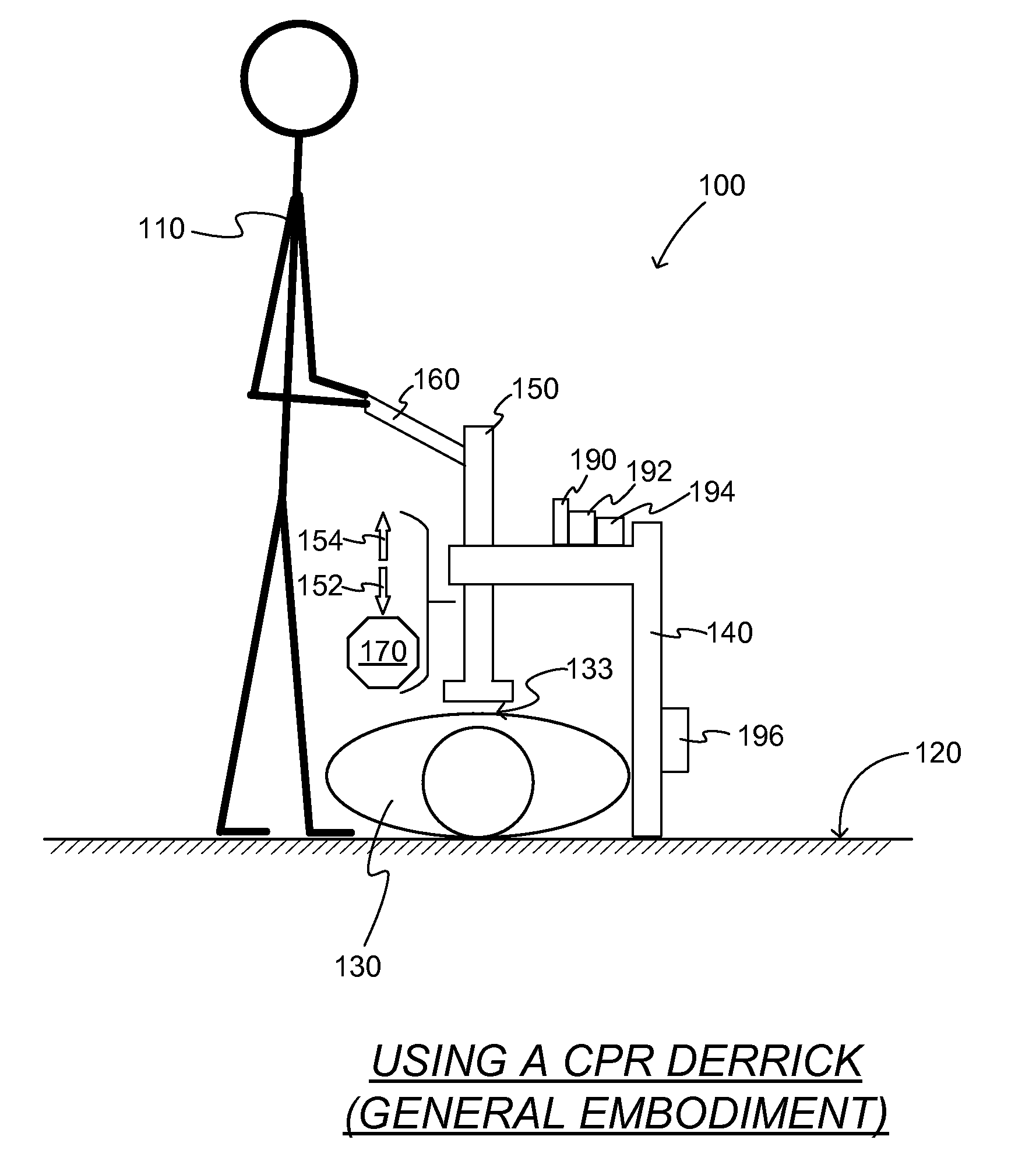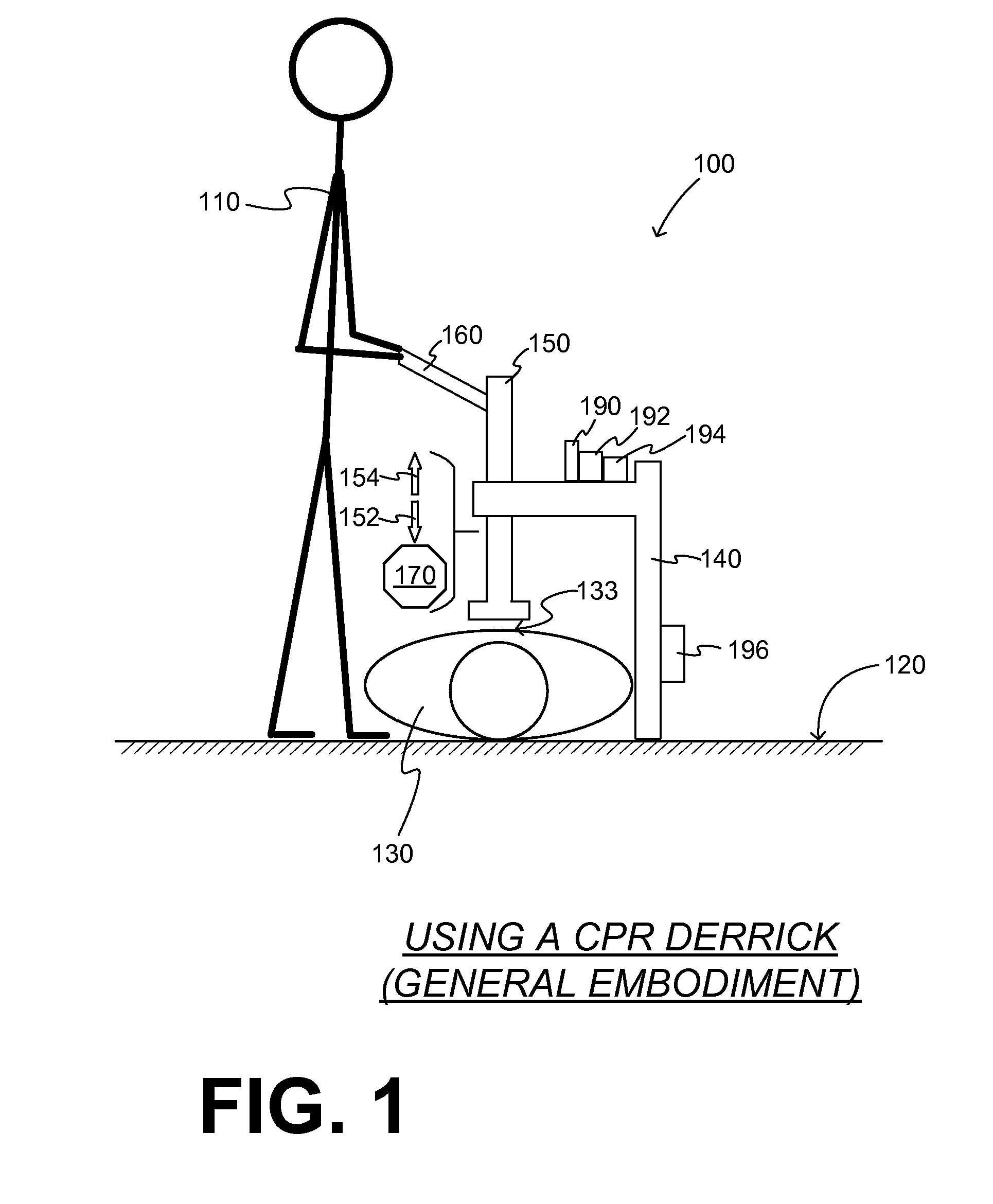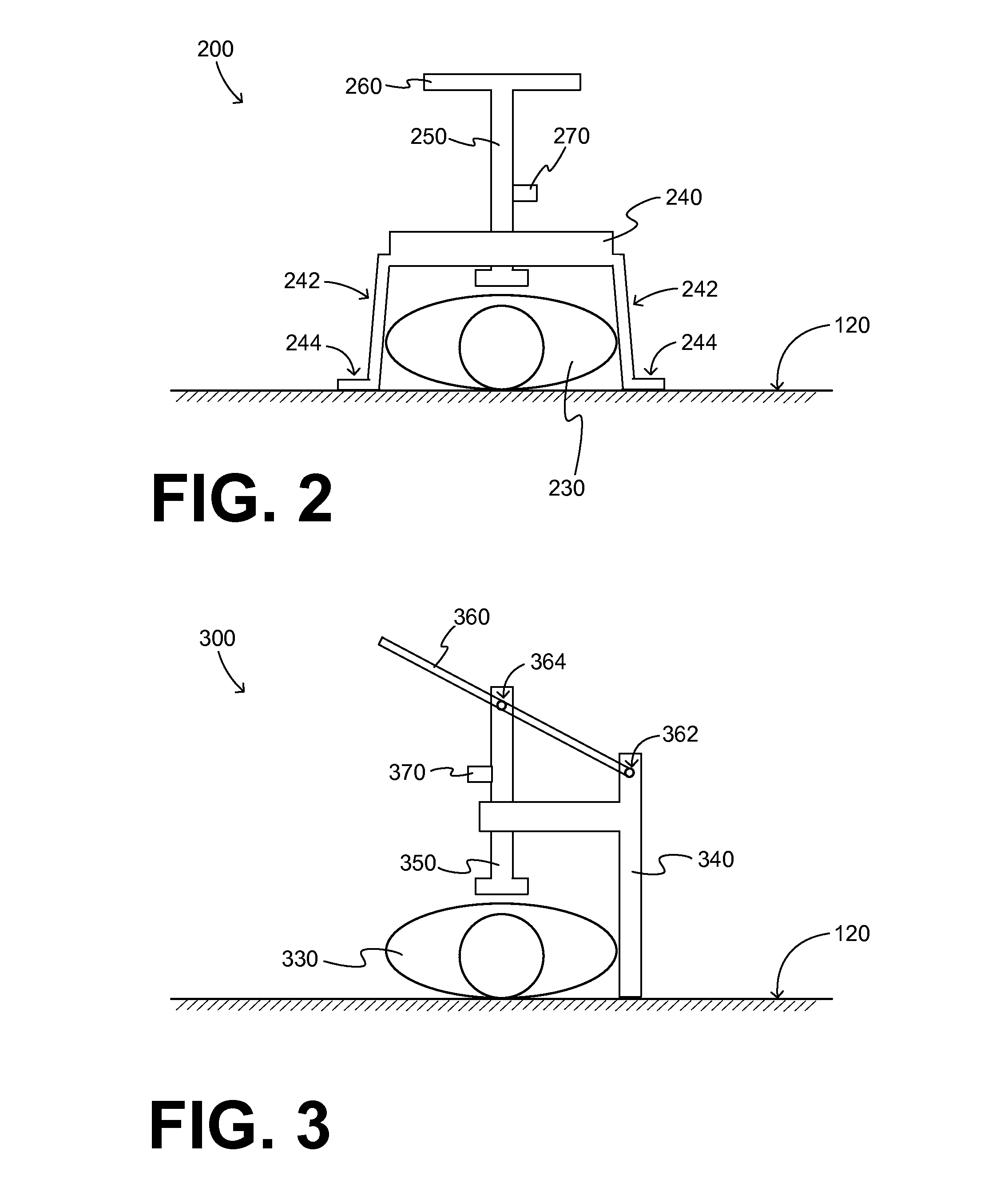Devices and methods for performing cpr while standing up
- Summary
- Abstract
- Description
- Claims
- Application Information
AI Technical Summary
Benefits of technology
Problems solved by technology
Method used
Image
Examples
embodiment 200
[0054]Embodiment 200 also includes a piston 250, and an actuator 260 that is a handle. The handle can be moved up and down, which causes piston 250 to perform the up motions and the down motions. This is an example of an actuator that is retained substantially horizontal with respect to horizontal surface 120 for its manual operation through many of the cycles.
[0055]The embodiment of FIG. 2 is also an example of where the actuator is operated by being moved in two substantially opposite directions, at the same frequency as the up and down motions. Other embodiments are also possible. For example, a second actuator can be further provided, which can be moved in unison or not with the first. For another example, a wheel or flywheel could be provided with gear. The actuator can be one or more handles or pedals for causing the wheel to spin, and the spinning wheel in turn causes, via the gear, the piston to perform the down and up motions.
[0056]Embodiment 200 further includes a bottom s...
embodiment 300
[0062]Embodiment 300 also includes an actuator 360 that is a handle. The handle can be moved up and down, to cause piston 350 to perform the up motions and the down motions. Handle 360 is movably coupled with piston 350 via a joint 364. Handle 360 rotates around a joint 362 in frame 340, and therefore operates as a lever for piston 350, providing mechanical advantage. Because of the mechanical advantage, handle 360 will have to be moved farther than handle 260, and with the same frequency, but with less force, in order to achieve the same profile of chest compressions.
[0063]In some of the embodiments, at least a portion of the base can be placed under the patient. An example is now described.
[0064]FIG. 4 is a diagram of a resuscitation scene. A rescuer 410 is performing chest compressions on a patient 430 by using a device 400, which is made according to embodiments.
[0065]Device 400 includes a frame 440 that has legs 442. In addition, a base is provided that has a portion 446 that i...
PUM
 Login to View More
Login to View More Abstract
Description
Claims
Application Information
 Login to View More
Login to View More - R&D
- Intellectual Property
- Life Sciences
- Materials
- Tech Scout
- Unparalleled Data Quality
- Higher Quality Content
- 60% Fewer Hallucinations
Browse by: Latest US Patents, China's latest patents, Technical Efficacy Thesaurus, Application Domain, Technology Topic, Popular Technical Reports.
© 2025 PatSnap. All rights reserved.Legal|Privacy policy|Modern Slavery Act Transparency Statement|Sitemap|About US| Contact US: help@patsnap.com



